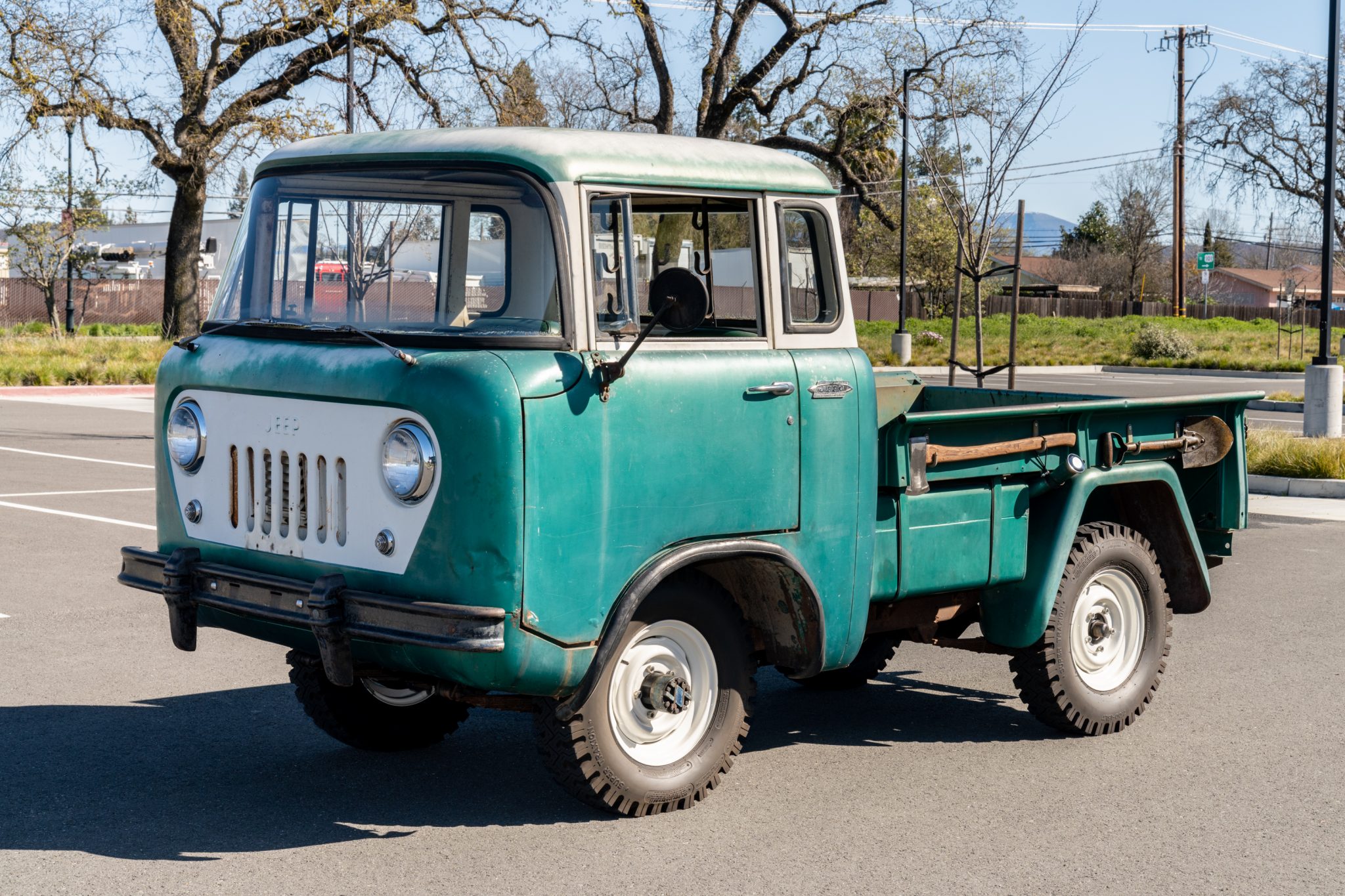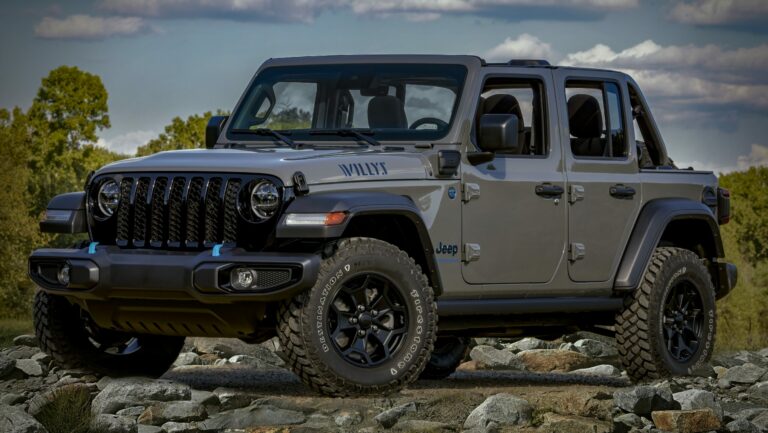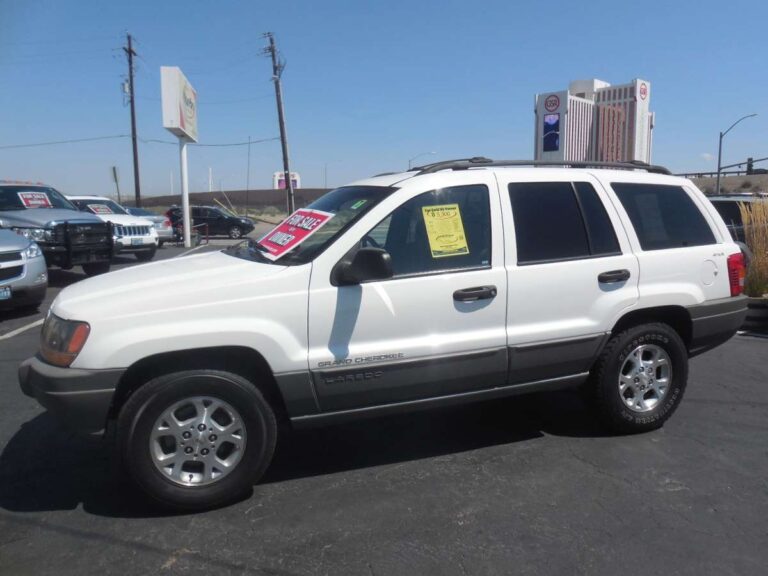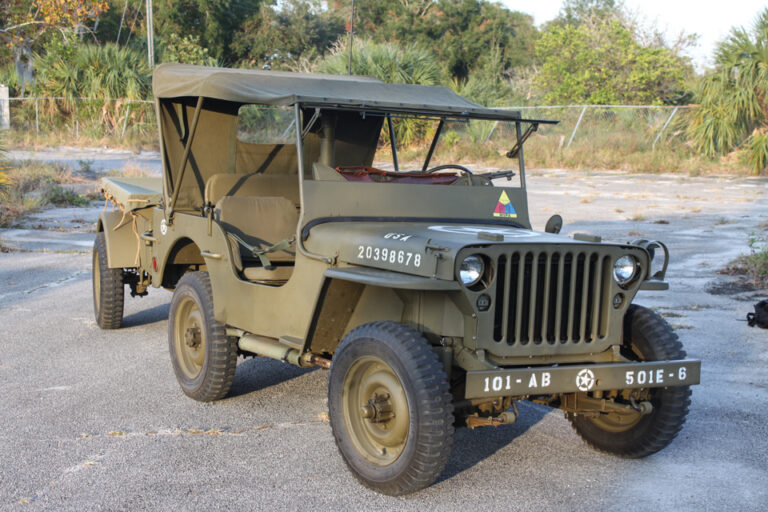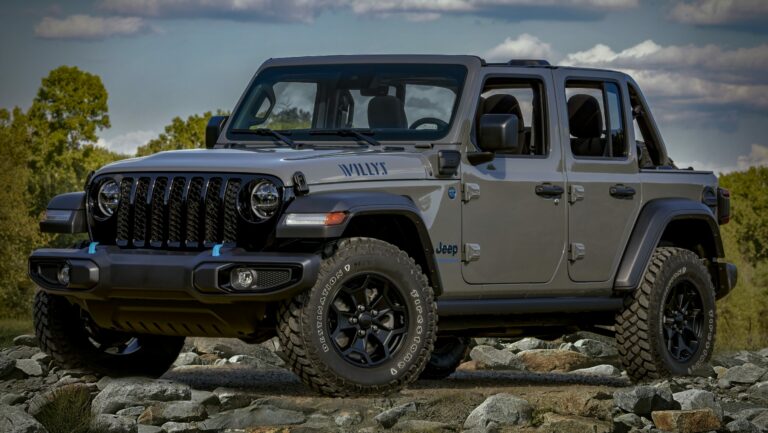1957 Willys Jeep Pickup For Sale: A Comprehensive Buyer’s Guide
1957 Willys Jeep Pickup For Sale: A Comprehensive Buyer’s Guide jeeps.truckstrend.com
For many, the mention of "Jeep" immediately conjures images of rugged utility, unparalleled off-road capability, and a lineage deeply rooted in American history. Among the most iconic and beloved members of this family is the Willys Jeep Pickup. Specifically, the 1957 model stands as a testament to post-war American ingenuity, a workhorse that seamlessly blended civilian utility with the legendary robustness of its military predecessors. Owning a 1957 Willys Jeep Pickup isn’t merely acquiring a vintage vehicle; it’s an investment in a tangible piece of automotive heritage, a commitment to classic motoring, and an entry into a passionate community of enthusiasts. This comprehensive guide will navigate the nuances of finding, evaluating, and ultimately owning a 1957 Willys Jeep Pickup for sale, providing invaluable insights for prospective buyers.
The Enduring Legacy of the Willys Jeep Pickup
1957 Willys Jeep Pickup For Sale: A Comprehensive Buyer’s Guide
The story of the Willys Jeep Pickup begins shortly after World War II, as Willys-Overland sought to capitalize on the immense popularity and proven reliability of the military MB "Jeep." The company transitioned the "Go-Devil" engine and rugged four-wheel-drive system into civilian applications, first with the CJ (Civilian Jeep) series, and soon after, with a full line of utility vehicles, including the Station Wagon and the Pickup Truck.
The Willys Pickup, introduced in 1947, was a natural extension of this philosophy. It offered a practical, durable, and surprisingly versatile vehicle for farmers, tradesmen, and anyone needing a reliable workhorse. By 1957, the Willys Pickup had matured, featuring the venerable F-head "Hurricane" engine (a more powerful derivative of the original Go-Devil), robust body-on-frame construction, and a no-nonsense design. These trucks were built to last, with simple mechanics that made them easy to repair in the field, and a four-wheel-drive system that could conquer nearly any terrain.
What makes the 1957 model particularly appealing today is its blend of classic aesthetics and enduring utility. It represents a sweet spot in automotive design – pre-dating the excessive chrome and fin era, yet possessing a distinct character that sets it apart from more modern trucks. Its simple lines, exposed fenders, and iconic grille evoke a sense of nostalgia and genuine American grit. This enduring appeal, combined with surprising parts availability and a dedicated owner community, ensures its continued relevance in the classic car market.
What to Look For When Buying a 1957 Willys Jeep Pickup
Acquiring a vintage vehicle like the 1957 Willys Jeep Pickup requires a discerning eye and a clear understanding of its common characteristics and potential issues. Whether you’re seeking a pristine showpiece or a rewarding restoration project, knowing what to inspect is crucial.
1. Condition Categories:
Before diving into specifics, categorize the vehicle’s overall condition to align with your budget and mechanical aptitude.
- Project/Barn Find: These are typically non-running, incomplete, or heavily rusted vehicles requiring a full frame-off restoration. They represent the lowest entry point financially but demand the most time, skill, and subsequent investment.
- Driver Quality: Running and driving, but showing signs of age, wear, and minor cosmetic imperfections. These are ideal for those who want to enjoy the truck immediately with the option for gradual improvements.
- Restored/Good Condition: A vehicle that has undergone a significant restoration, or is an exceptionally well-preserved original. It’s largely turn-key, reliable, and presents very well.
- Show Quality/Concours: Flawless, professionally restored to original specifications or better, often winning awards. These command the highest prices.
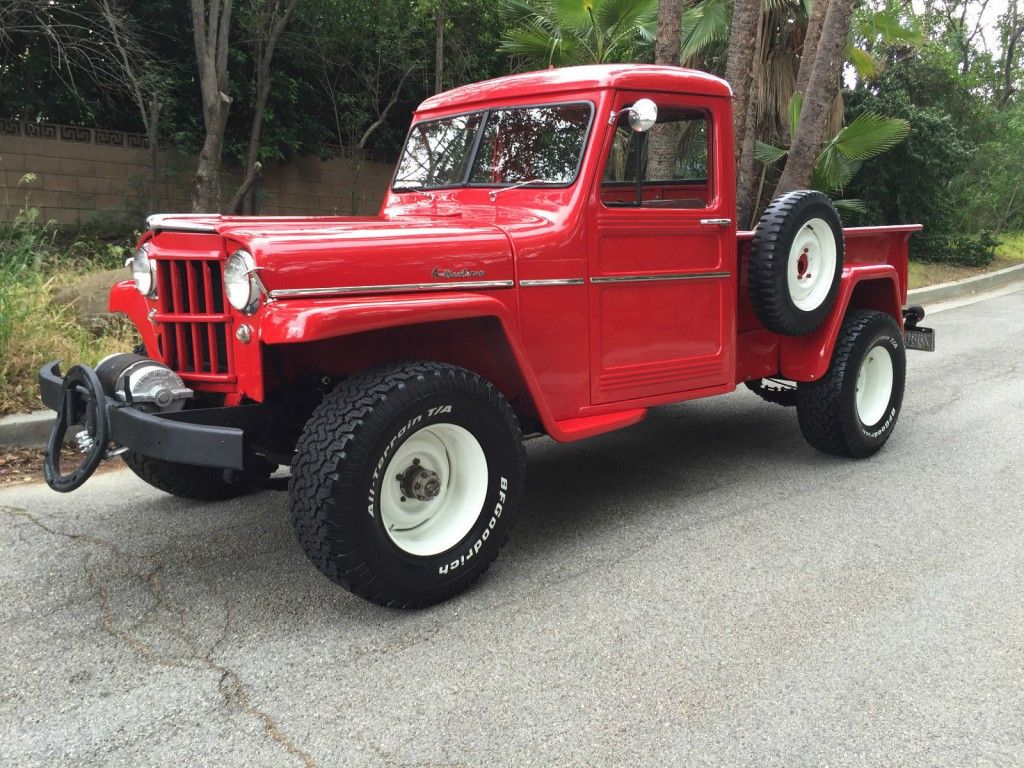

2. Key Inspection Points:
-
Frame and Body Rust: This is the primary enemy of any vintage vehicle. Pay meticulous attention to:
- Frame Rails: Check for severe pitting, cracks, or repairs, especially near suspension mounting points and body mounts.
- Cab: Floorboards, rocker panels, cab corners, and firewall.
- Bed: Floor, wheel wells, and tailgate. Water often pools in the bed, leading to rust.
- Fenders and Running Boards: Common rust spots due to exposure to road debris and moisture.
- Tip: Bring a small magnet; it will not stick to body filler, revealing hidden rust repairs.
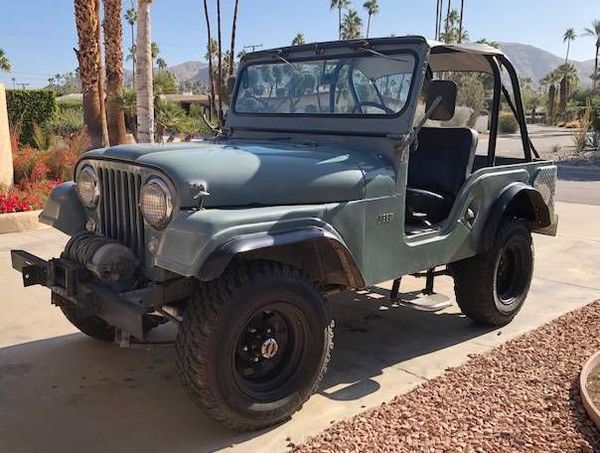
-
Engine & Drivetrain:
- Engine (F-head "Hurricane" 4-cylinder): Check for excessive smoke (blue for oil, white for coolant), unusual noises (knocking, ticking), and significant oil leaks. Ensure proper oil pressure and temperature. While parts are available, a full rebuild can be costly.
- Transmission (T-90 3-speed manual): Test all gears, including reverse. Listen for grinding, especially when shifting. Check for fluid leaks.
- Transfer Case (Dana 18): Engage 4-wheel drive (high and low range) and ensure it shifts smoothly. Check for leaks.
- Axles (Dana 44 rear, Dana 25 or 27 front): Check for leaks around differential covers and wheel ends. Listen for howling or clunking noises.
-
Suspension & Steering:
- Leaf Springs: Check for sagging, broken leaves, or worn bushings.
- Shock Absorbers: Look for leaks or excessive bounce.
- Steering: Check for excessive play in the steering wheel. Inspect tie rods, drag links, and the steering box for looseness or leaks.
-
Brakes:
- The 1957 Willys uses drum brakes on all four wheels. Test pedal feel (should be firm, not spongy). Check for leaks at wheel cylinders and the master cylinder. Consider the cost of converting to front disc brakes for improved safety if not already done.
-
Electrical System:
- Originals were 6-volt systems. Many have been converted to 12-volt for easier starting and modern accessory use. Verify the conversion quality if present. Check all lights, gauges, wipers, and the horn. Inspect wiring for fraying, brittle insulation, or shoddy repairs.
-
Interior:
- Simplicity is key here. Check seat upholstery, gauges (speedometer, oil pressure, temp, fuel), and glass condition (windshield, rear window, door glass). Ensure window regulators function.
-
Paperwork:
- Crucially, verify the vehicle’s title matches the VIN plate. Ensure the title is clear and transferable. For older vehicles, sometimes a bill of sale is all that’s available; research your state’s requirements for titling such a vehicle.
The Ownership Experience: Benefits and Challenges
Owning a 1957 Willys Jeep Pickup is a unique journey, offering a distinct set of rewards and hurdles.
Benefits:
- Unmatched Character & Nostalgia: These trucks turn heads and spark conversations wherever they go. They embody an era of straightforward utility and classic design.
- Robust & Simple Mechanics: Built like tanks, Willys Pickups are surprisingly easy to work on for those with basic mechanical knowledge. Parts, while specific, are often available through specialist suppliers and the active aftermarket.
- Excellent Off-Road Capability: Even in stock form, the 4WD system, high ground clearance, and short wheelbase make them highly capable off-road vehicles, living up to the Jeep name.
- Strong Community Support: A vibrant community of Willys enthusiasts exists online and through clubs, offering a wealth of knowledge, advice, and camaraderie.
- Appreciating Asset: Well-maintained or properly restored Willys Pickups have shown a steady appreciation in value, making them a potentially sound investment.
Challenges:
- Lack of Modern Comforts: Be prepared for no air conditioning, power steering, power brakes, or sophisticated infotainment. Highway speeds are often limited to 55-60 mph, and road noise is considerable.
- Rust Prevention: Ongoing vigilance against rust is essential, especially if the vehicle is exposed to elements.
- Finding Skilled Mechanics: While simple, not all modern mechanics are familiar with vintage vehicles, especially 6-volt systems or specific Willys components.
- Daily Driver Limitations: While reliable, they are not ideal for long daily commutes or high-speed highway travel. They are best suited for recreational use, light hauling, or local errands.
Solutions and Tips for Owners:
- Join Willys Forums/Clubs: This is your best resource for technical advice, parts sourcing, and connecting with fellow enthusiasts.
- Learn Basic Maintenance: Their simplicity makes them excellent vehicles to learn basic mechanics on. Invest in a good shop manual.
- Consider Thoughtful Upgrades: A 12-volt conversion, front disc brakes, or modern tires can significantly enhance usability and safety without compromising character.
- Proper Storage: Keep the truck garaged and dry to prevent rust.
- Embrace the Experience: Part of the charm is the tactile, unassisted driving experience. Enjoy the connection to the road and the machine.
Where to Find and How to Negotiate
Finding your ideal 1957 Willys Jeep Pickup requires patience and knowing where to look.
Where to Find:
- Online Marketplaces:
- Specialized Classic Car Sites: Hemmings, ClassicCars.com, Bring a Trailer (for higher-end examples), eBay Motors.
- Willys/Jeep Specific Forums & Classifieds: Often have a dedicated "for sale" section where enthusiasts list their vehicles.
- Facebook Groups: Numerous groups dedicated to vintage Jeeps and Willys vehicles.
- Auctions: Classic car auctions (e.g., Mecum, Barrett-Jackson) occasionally feature Willys Pickups, especially higher-quality examples.
- Local Classifieds & Word of Mouth: Don’t underestimate the power of local listings or simply asking around at car shows or automotive gatherings.
How to Negotiate:
- Do Your Homework: Research recent sales of similar condition Willys Pickups. Understand the market value for different conditions.
- Be Prepared to Walk Away: If the price isn’t right, or the vehicle has too many hidden issues, be ready to move on.
- Factor in Costs: Always budget for potential repairs, maintenance, and any desired upgrades beyond the purchase price.
- Pre-Purchase Inspection (PPI): For serious contenders, especially if buying remotely, arrange for a qualified vintage mechanic or Willys specialist to perform a PPI. This investment can save you thousands in the long run.
- Don’t Rush: Take your time, ask questions, and gather all available information about the vehicle’s history, maintenance, and any known issues.
1957 Willys Jeep Pickup Estimated Price Table
The price of a 1957 Willys Jeep Pickup can vary widely based on its condition, originality, location, and market demand. The table below provides a general estimate:
| Condition Category | Description | Estimated Price Range (USD) | Key Factors Influencing Price |
|---|---|---|---|
| Project/Parts | Non-running, significant rust, missing components. Requires complete restoration. | $5,000 – $15,000 | Extent of rust, completeness of parts, presence of original engine/transmission, title status. |
| Driver Quality | Running and driving, but shows wear and tear. Minor rust, older paint, functional but not show-ready. | $15,000 – $30,000 | Mechanical soundness, drivetrain originality, interior condition, minor body imperfections, safety features (brakes, lights). |
| Restored/Good | Well-maintained restoration or a highly original, well-preserved example. Minor flaws, reliable driver. | $30,000 – $50,000 | Quality of restoration (paint, bodywork), engine rebuild history, suspension/brake condition, interior refurbishment, attention to detail. |
| Show Quality | Concours-level restoration, period-correct, excellent paint, chrome, and mechanicals. Near-flawless. | $50,000 – $80,000+ | Authenticity, professional restoration quality, rarity of specific features, historical significance, awards/provenance. |
Disclaimer: These are approximate ranges and can vary significantly based on location, seller, market demand, and specific vehicle features (e.g., rare options, known history, and modifications). Always conduct thorough research and inspection.
Frequently Asked Questions (FAQ)
Q1: Is a 1957 Willys Jeep Pickup reliable for daily driving?
A1: While mechanically robust, they are generally not ideal for daily driving, especially long commutes or high-speed highway travel. They lack modern comforts, cruise at lower speeds, and require more driver input. They shine in recreational use, local errands, or as a unique weekend cruiser.
Q2: Are parts hard to find for a 1957 Willys Jeep Pickup?
A2: Surprisingly, no. Thanks to a dedicated aftermarket and a strong community, many mechanical and some body parts are readily available. Specialist vendors, online forums, and even NOS (New Old Stock) parts can be found.
Q3: What kind of fuel economy can I expect?
A3: Fuel economy is not a strong suit. Expect single digits to low teens (e.g., 8-15 MPG), depending on driving conditions, engine tune, and modifications.
Q4: Can it handle modern roads and traffic?
A4: Yes, but with limitations. It will feel slower, louder, and require more effort than a modern vehicle. Braking distances are longer due to drum brakes, and there’s no power steering or ABS. Drivers need to be more attentive and anticipate traffic.
Q5: What’s the difference between a Willys Jeep Pickup and a CJ?
A5: The Willys Jeep Pickup is a light-duty truck built on a distinct, longer wheelbase chassis, designed for hauling and utility. The CJ (Civilian Jeep) series, while sharing some mechanical components, is a shorter, more compact, open-top vehicle designed for off-road recreation and general utility, more akin to the military Jeeps.
Q6: Is a 1957 Willys Jeep Pickup a good investment?
A6: For well-maintained or properly restored examples, yes. Values have shown a steady increase over the years, making them a relatively stable investment in the classic car market. Their iconic status and limited numbers contribute to their desirability.
Conclusion
The 1957 Willys Jeep Pickup represents a unique blend of rugged utility, timeless design, and a tangible connection to American automotive history. More than just a vehicle, it offers an authentic, unadulterated driving experience that is increasingly rare in today’s world. While owning one comes with its own set of considerations, the rewards — from the admiring glances to the joy of working on a simple, robust machine, and the camaraderie of the Willys community — far outweigh the challenges. For the discerning enthusiast seeking a classic that embodies both heritage and capability, a 1957 Willys Jeep Pickup for sale is not just a purchase, but an invitation to a fulfilling adventure.

